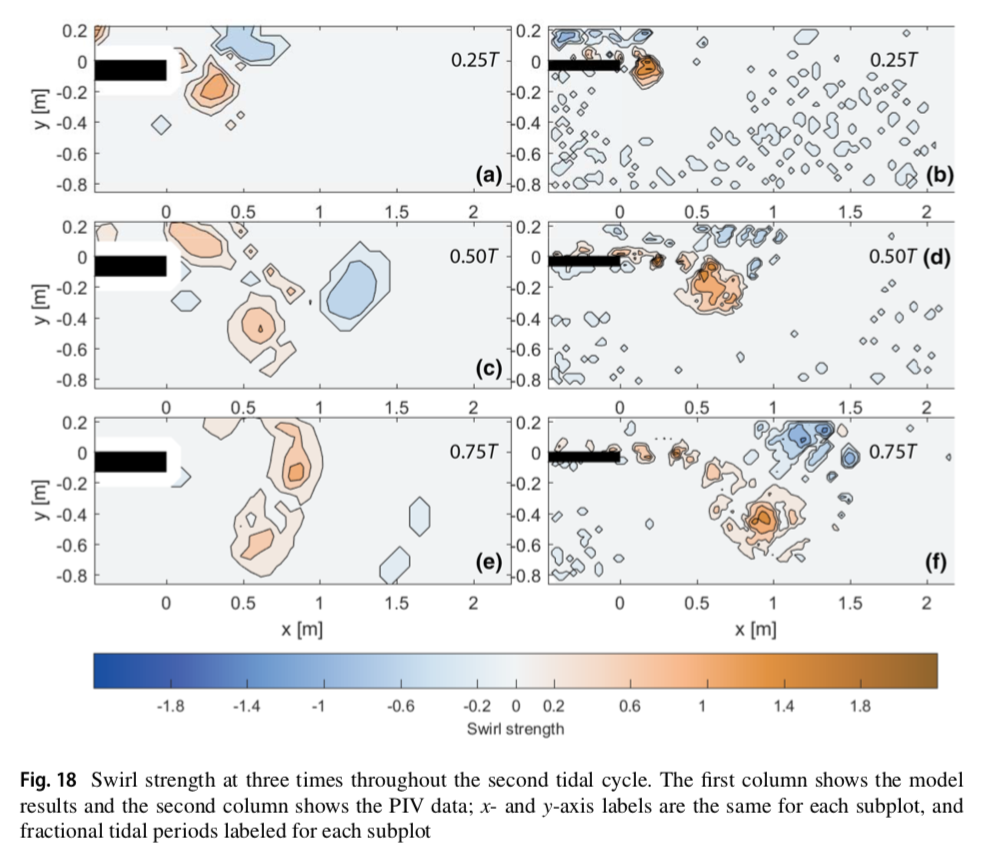Simulation of laboratory experiments for vortex dynamics at shallow tidal inlets using the Fine Resolution Environmental HydroDynamics (Frehd) model
ABSTRACT: In this paper, we present the results of numerical simulations matched to laboratory experiments of tidal, starting-jet vortices forming at idealized, barotropic inlets. The laboratory experiments are for sinusoidally varying inflow/outflow along a wide, flat basin. Inlet configurations include simple inlets with negligible channel length as well as a longer inlet channels through a long barrier island and jettied inlet. Laboratory observations are made using particle image velocimetry, and we analyze the laboratory and numerical model velocity fields to compare starting-jet trajectory, diameter, and total circulation. The numerical simulations use the Fine Resolution Environmental Hydrodynamic model, solving the three-dimensional, hydrostatic, barotropic equations of motion. Our goal is to identify the minimum model attributes necessary to match the vortex properties. This is accomplished using a third-order upwind scheme for advection, a constant bottom friction drag coefficient, and a one-equation turbulence model for transport of turbulent kinetic energy. The optimal value of the bottom drag coefficient matches the time-average value at the basin inflow/outflow boundaries, and the optimal dissipation coefficient, Cme, was an order of magnitude smaller than literature values for a steady open-channel flow. We show that the drag coefficient mainly affects the advection speeds of the outer coastal waters, which control the penetration of the tidal vortices away from the inlet, and the lower turbulence dissipation rate results from the low turbulent dissipation in the large, shallow starting-jet vortices.


